Initial Apollo Spaceship Concept by North American Aviation, Inc
Initial Apollo Spaceship Concept by North American Aviation, Inc. The previously classified document SID 61-280 (NASA Project Apollo Spacecraft, Volume 1 - Technical Proposal) dated October 6, 1961.
The document guesses the features of a later version of the Apollo spacecraft, which flew in 1966 - 1975. The initial design of the Command Module is especially similar - its 1961 design differs little from the last version presented by NASA in January 1964 (Apollo Spacecraft Block I & Block II for Saturn-1B and Saturn-5 launch vehicles ):
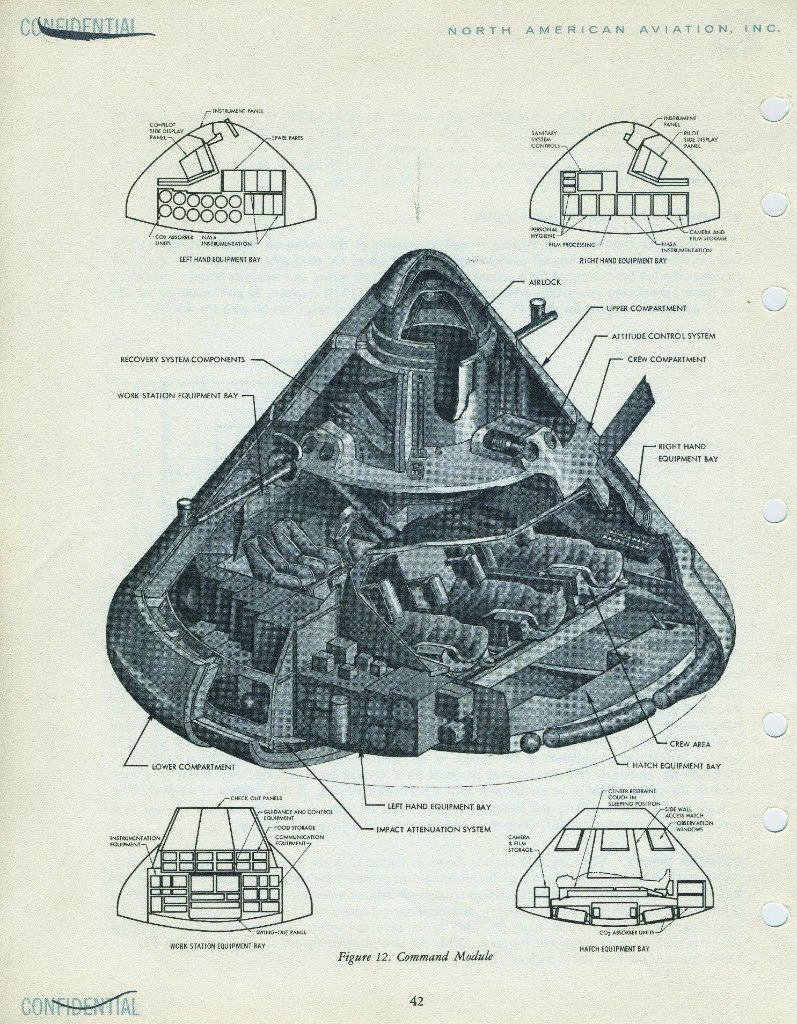
The Service Module was the most notable difference - in 1961 it was not yet supposed to install a powerful SPS liquid-propellant rocket engine (Aerojet General AJ10-137), since the ship was not designed for independent braking to transfer to a lunar orbit and descent from her. Until 1962, when the American engineer John Hubolt of the Langley Research Center proposed to NASA the idea of approaching in near-moon orbit (LOR - Lunar-Orbit Rendezvous *), the idea of a direct flight to the lunar surface was considered as the main method for manned flight of a person to the Moon (Direct Ascent), which would be carried out with a single launch of the Nova ** heavy-duty launch vehicle, more powerful than the Saturn S-5:
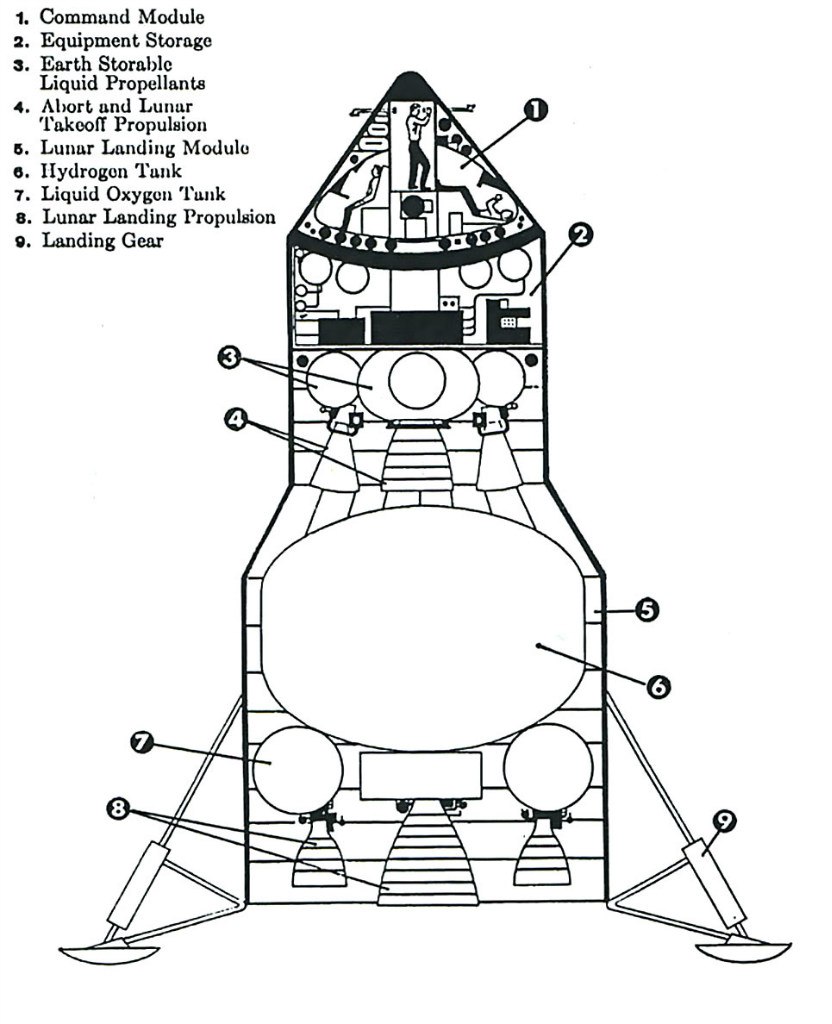
Driving spaceship "Apollo" of the sample in 1961 for the direct flight to the moon (method Direct Ascent)

So at NASA were landing on the moon in 1961, the spacecraft "Apollo" with the help of a direct flight to the lunar surface (Direct Ascent)
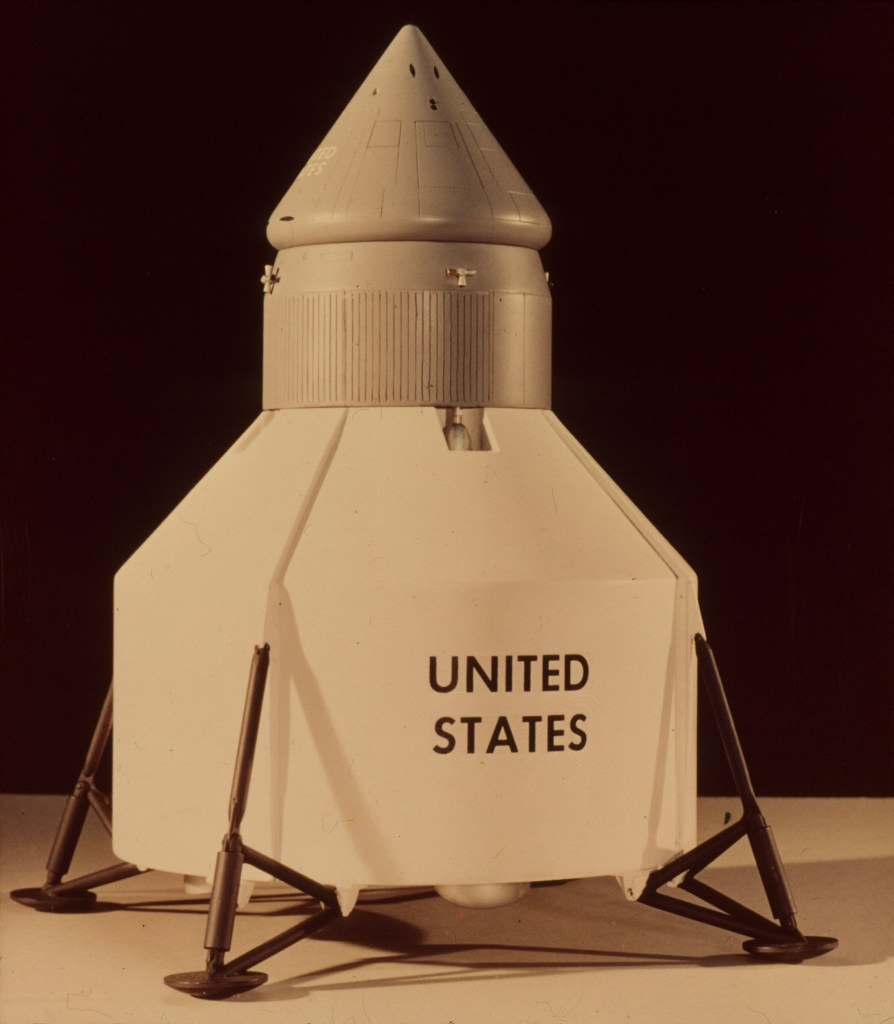
spacecraft Model " Apollo "sample of 1961 for a direct flight to the moon (Direct Ascent method)
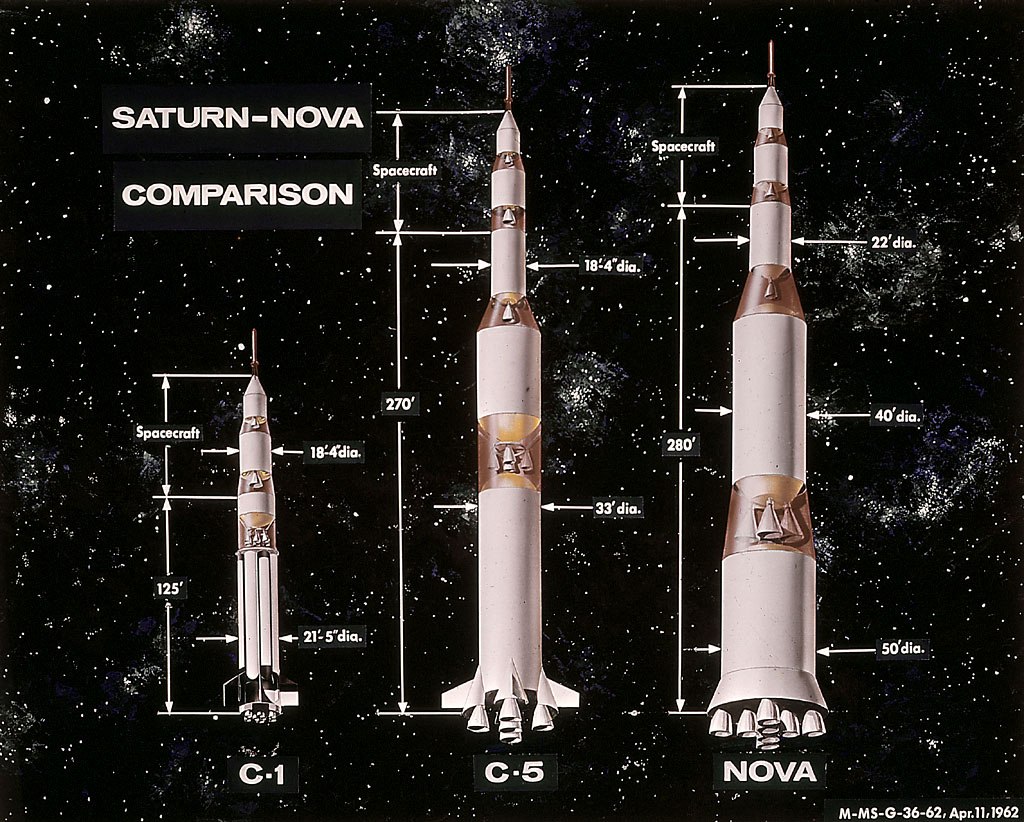
Comparison of the Saturn S-1, Saturn S-5 and Nova launch vehicles. A poster from the George Marshall Space Flight Center on April 11, 1962. Poster NASA MSFC-9902050
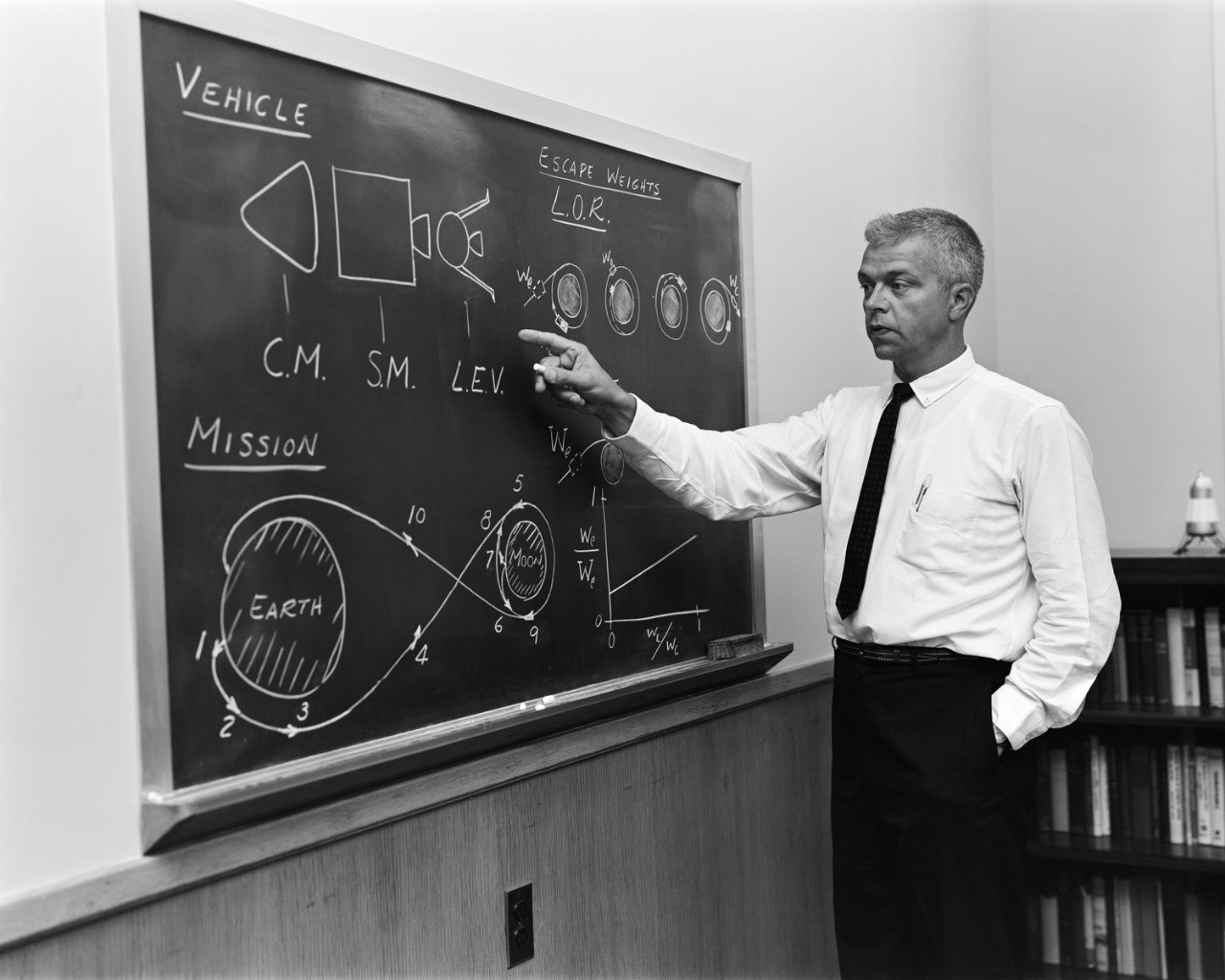
NASA engineer John Hubolt justifies the mass saving of the Apollo spacecraft for the LOR approach (LOR - Lunar Orbit Rendezvous). The picture was taken on July 24, 1962. Photo NASA L-1962-05848
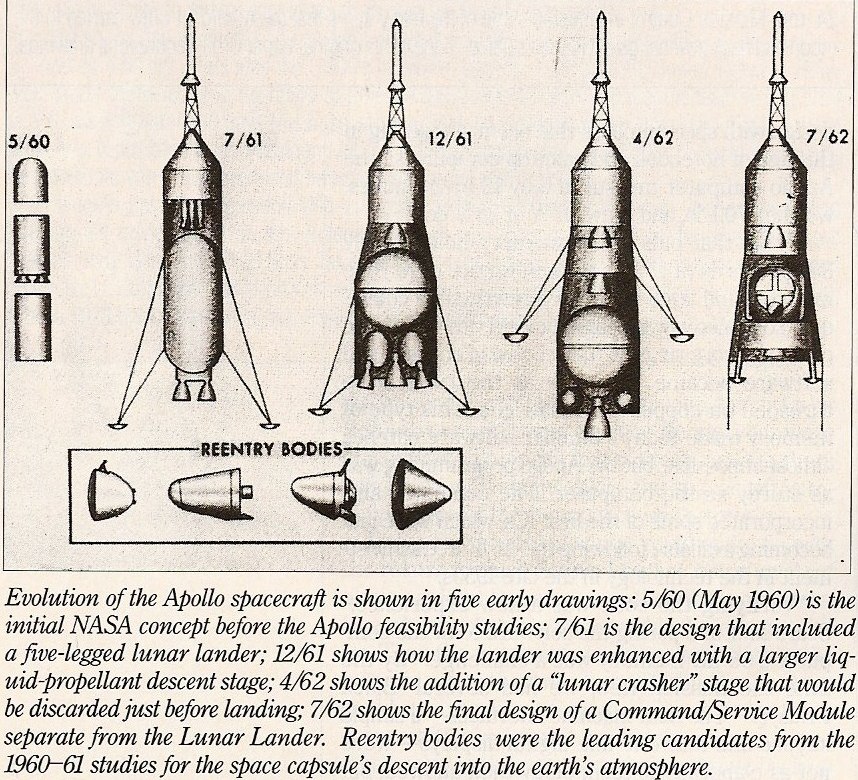
The evolution of the Apollo spacecraft from 1960 to 1962. NASA drawing
The idea of approaching in the lunar orbit was more progressive, since it implied significant savings in the mass of the spacecraft. It was taken as a basis in 1962, completely reworking the concept of flights to the moon carried out under the Apollo program. The abandonment of the heavy ship, which carried out a direct flight by the Direct Ascent method, allowed NASA to stop using the Saturn S-5 launch vehicle (later designated simply Saturn-5), which by then had already been tested as separate components (firing tests of F-1 and J-2 engines, static and dynamic tests of rocket blocks S-IC, S-II and S-IVB) at the George Marshall Space Flight Center (MSFC). The Nova project remained on paper.
Copies of SID 61-280 were sent out in 1961 for study to various NASA centers. The archive of North American Aviation, Inc., after its abolition in 1996, was transferred to The Boeing Company. Only part of this unique historical document was scanned, since the rest of the pages were lost. Part of the surviving document went to the archives of the San Diego Air & Space Museum, where it was recently discovered and converted into electronic form (the original is naturally in English).
© Sergey Vyatkin, 2014
* - this idea belongs to the Soviet scientist Yuri Vasilyevich Kondratyuk (pseudonym of Alexander Ignatievich Shargey), one of the founders of astronautics. LOR in the United States is called Kondratyuk's Route.
** - a multi-launch method was also considered with assembly from separate modules of the Apollo spacecraft directly in low Earth orbit, which also carries out, after entering the flight path to the Moon, a direct flight to the lunar surface. The method was called EOR (Earth-Orbit Rendezvous) and involved the use of up to 15 Saturn S-1 launch vehicles, the “weakest” in the Saturn and Nova family of launch vehicles.
The document guesses the features of a later version of the Apollo spacecraft, which flew in 1966 - 1975. The initial design of the Command Module is especially similar - its 1961 design differs little from the last version presented by NASA in January 1964 (Apollo Spacecraft Block I & Block II for Saturn-1B and Saturn-5 launch vehicles ):

The Service Module was the most notable difference - in 1961 it was not yet supposed to install a powerful SPS liquid-propellant rocket engine (Aerojet General AJ10-137), since the ship was not designed for independent braking to transfer to a lunar orbit and descent from her. Until 1962, when the American engineer John Hubolt of the Langley Research Center proposed to NASA the idea of approaching in near-moon orbit (LOR - Lunar-Orbit Rendezvous *), the idea of a direct flight to the lunar surface was considered as the main method for manned flight of a person to the Moon (Direct Ascent), which would be carried out with a single launch of the Nova ** heavy-duty launch vehicle, more powerful than the Saturn S-5:

Driving spaceship "Apollo" of the sample in 1961 for the direct flight to the moon (method Direct Ascent)

So at NASA were landing on the moon in 1961, the spacecraft "Apollo" with the help of a direct flight to the lunar surface (Direct Ascent)

spacecraft Model " Apollo "sample of 1961 for a direct flight to the moon (Direct Ascent method)

Comparison of the Saturn S-1, Saturn S-5 and Nova launch vehicles. A poster from the George Marshall Space Flight Center on April 11, 1962. Poster NASA MSFC-9902050

NASA engineer John Hubolt justifies the mass saving of the Apollo spacecraft for the LOR approach (LOR - Lunar Orbit Rendezvous). The picture was taken on July 24, 1962. Photo NASA L-1962-05848

The evolution of the Apollo spacecraft from 1960 to 1962. NASA drawing
The idea of approaching in the lunar orbit was more progressive, since it implied significant savings in the mass of the spacecraft. It was taken as a basis in 1962, completely reworking the concept of flights to the moon carried out under the Apollo program. The abandonment of the heavy ship, which carried out a direct flight by the Direct Ascent method, allowed NASA to stop using the Saturn S-5 launch vehicle (later designated simply Saturn-5), which by then had already been tested as separate components (firing tests of F-1 and J-2 engines, static and dynamic tests of rocket blocks S-IC, S-II and S-IVB) at the George Marshall Space Flight Center (MSFC). The Nova project remained on paper.
Copies of SID 61-280 were sent out in 1961 for study to various NASA centers. The archive of North American Aviation, Inc., after its abolition in 1996, was transferred to The Boeing Company. Only part of this unique historical document was scanned, since the rest of the pages were lost. Part of the surviving document went to the archives of the San Diego Air & Space Museum, where it was recently discovered and converted into electronic form (the original is naturally in English).
© Sergey Vyatkin, 2014
* - this idea belongs to the Soviet scientist Yuri Vasilyevich Kondratyuk (pseudonym of Alexander Ignatievich Shargey), one of the founders of astronautics. LOR in the United States is called Kondratyuk's Route.
** - a multi-launch method was also considered with assembly from separate modules of the Apollo spacecraft directly in low Earth orbit, which also carries out, after entering the flight path to the Moon, a direct flight to the lunar surface. The method was called EOR (Earth-Orbit Rendezvous) and involved the use of up to 15 Saturn S-1 launch vehicles, the “weakest” in the Saturn and Nova family of launch vehicles.
